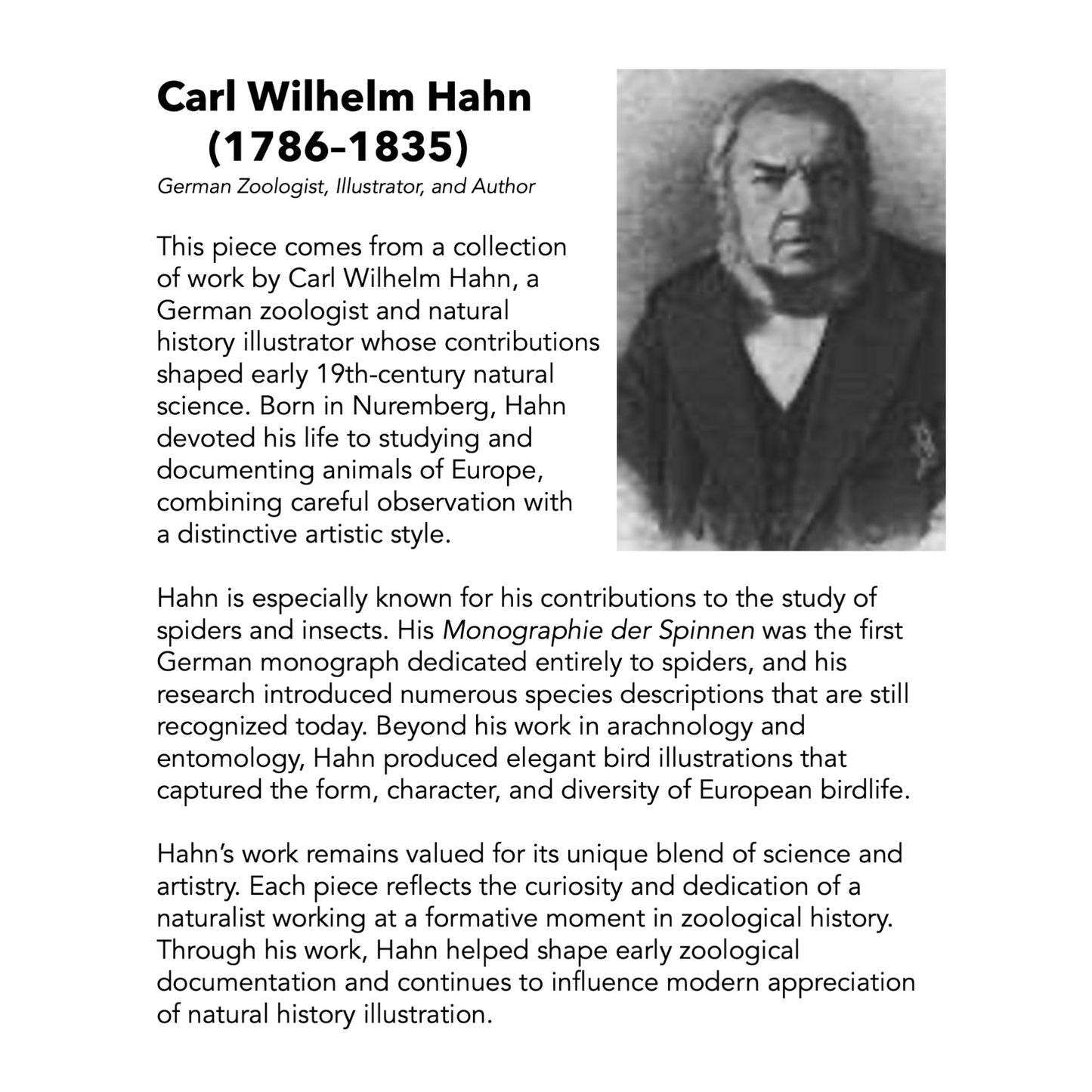Tyrannostorus
Epeira Clavipes - Framed Art by Carl Wilhelm Hahn
Epeira Clavipes - Framed Art by Carl Wilhelm Hahn
Couldn't load pickup availability
Discover an exceptional original hand tinted engraving from 1820 by renowned German zoologist and natural history illustrator Carl Wilhelm Hahn. This striking work features Epeira clavipes, created for Hahn’s monumental publication Monographia Aranearum = Monographie der Spinnen, the first German monograph devoted entirely to spiders.
About the Artwork
This authentic 19th century engraving measures approximately 9.75 x 7.75 inches and showcases Hahn’s delicate hand coloring and finely detailed linework. The top illustration depicts the male spider, while the lower illustration presents the female, capturing coloration differences that define the species. The name Epeira clavipes, used during Hahn’s time, is now considered an outdated classification. The modern and accepted scientific name is Trichonephila clavipes, commonly known as the golden silk orb weaver or banana spider.
Trichonephila clavipes is a large and visually striking orb weaving spider found throughout the southeastern United States and across regions of the Americas. Females, which can reach up to 50 millimeters in body length, are significantly larger than the much smaller males, which average 6 to 8 millimeters. Females display a silvery white cephalothorax and a long orange brown abdomen marked with white yellow spots, while their legs show bold yellow and brown banding with distinctive black tufts near the joints. Males are more uniformly dark brown and far less vibrant.
These spiders are renowned for their enormous golden colored orb webs, which can span several feet and shimmer in sunlight. Their webs may remain in place for long periods, with the female often maintaining or rebuilding them through the season. Despite their impressive size, Trichonephila clavipes poses little danger to humans. Their venom is mild, and bites typically cause only minor irritation if they occur at all.
Hahn’s rendering preserves an early scientific perspective on this remarkable species, capturing both its form and its natural significance at a pivotal moment in the history of arachnology.
This engraving is beautifully presented in an ornate gold frame measuring approximately 21.25 x 17.25 inches, complete with a secure hanging apparatus. A certificate of authenticity is included.
About Carl Wilhelm Hahn
Carl Wilhelm Hahn, a German zoologist and natural history illustrator, made enduring contributions to early 19th century natural science. Born in Nuremberg, Hahn devoted his life to studying and documenting European wildlife, combining meticulous observation with a distinctive artistic style.
He is especially celebrated for his pioneering work in arachnology and entomology. Monographie der Spinnen introduced numerous species descriptions still recognized today and established a foundation for future spider research in Germany. Beyond arachnids, Hahn also produced elegant bird illustrations known for their accuracy, character, and attention to detail.
Hahn’s work remains treasured for its rare blend of science and artistry. Each piece reflects the curiosity and dedication of a naturalist working at a formative moment in zoological history, and his illustrations continue to shape the modern appreciation of natural history art.
This Epeira clavipes engraving offers a rare opportunity to own a museum worthy example of early zoological illustration. This work of art is even more impressive in person!
Share














